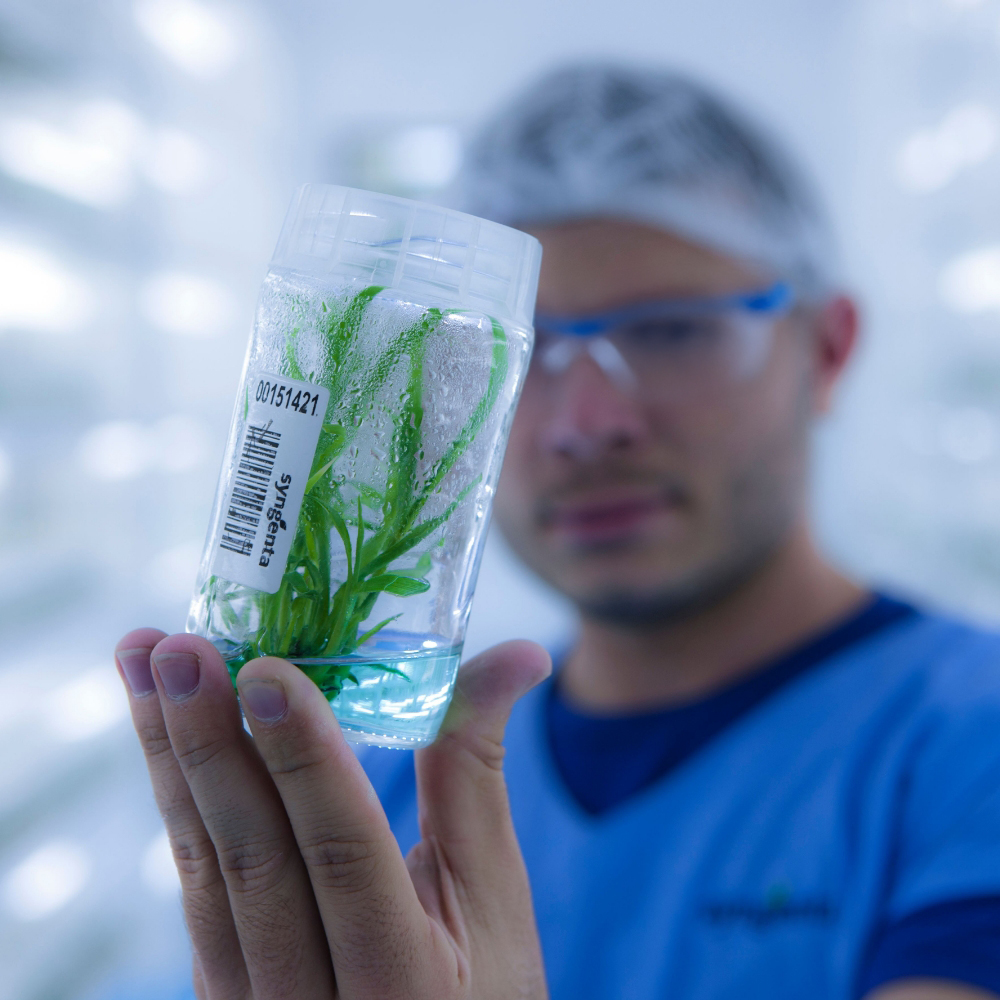Driving Scientific Breakthroughs
Accelerating Product development
"At Syngenta we continually challenge ourselves to bring better innovation to growers. We collaborate with the best in the world to inspire our scientists with technologies and digital approaches, and bring scientific breakthrough to reality."
Martin Clough, Head CP R&D Technology & Digital Integration
Our experienced R&D teams are working hard to improve the sustainability, speed, and precision of how we develop new products for growers and the industries they supply.
We believe that scientific investigation and innovation will go further and faster by collaborating with people from every walk of life. That's why through Shoots by Syngenta™ we are sharing our areas of scientific focus.
Review the links below to find out more about these areas and our current interests.

We're interested in...Increasing our ability to design or discover novel bioactive chemical compounds for control of weeds, plant pests, disease and to enhance crop quality and resilience to stress |
Examples include...
|
|
Improving our ability to discover, design or isolate novel biological active agents such as living microbes, natural chemicals, natural extracts and biomolecules such as proteins, peptides and nucleic acids |
|
We're interested in...Increasing the effectiveness and efficiency in how we synthesize, assess and optimize novel bioactive molecules |
Examples include...
|
|
Improving our ability to optimize the activity of, and scale the production of novel biological active agents such as living microbes, natural chemicals, natural extracts and biomacromolecules such as proteins, peptides and nucleic acids |
|
|
Optimizing trait progression and breeding technologies to increase our effectiveness of developing new seed varieties |
|
We're interested in...Being able to better characterize the biological effects of chemical and biological agents |
Examples include...
|
| Increasing our understanding of the factors contributing to the biological effects we observe from chemical and biological agents |
|
We're interested in...Technologies which enable us to better formulate chemical and biological agents to improve their efficacy and sustainability, and to enable their more precise application |
Examples include...
|
| Innovations in product technologies which improve the activity and reduce the environmental impact of our products and ensure customer convenience and safe use |
|
| We are interested in new capabilities and technologies that enable the design, development and implementation of sustainable manufacturing processes |
|
We're interested in...Identifying, understanding and modelling potential toxicological and environmental risks associated with chemical or biological active ingredients at an early stage of their development |
Examples include...
|
What we can offer you
Work with us to help feed the world
Our people are specialists: they are innovators, scientists, engineers, technologists, regulatory experts and data scientists in multiple fields.
